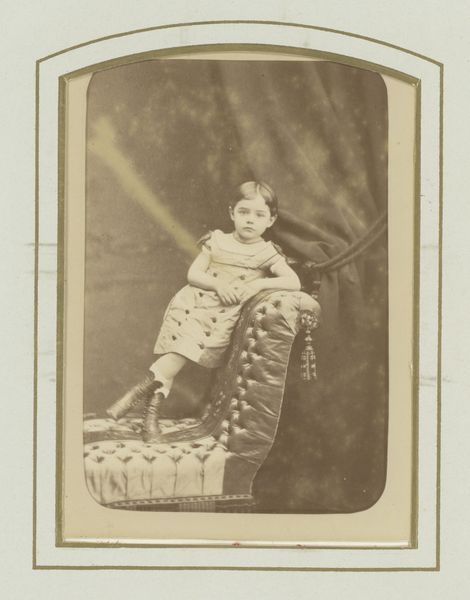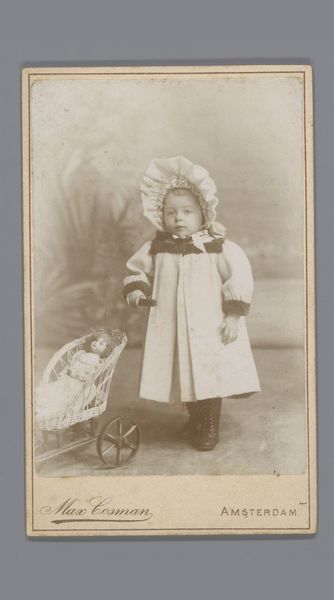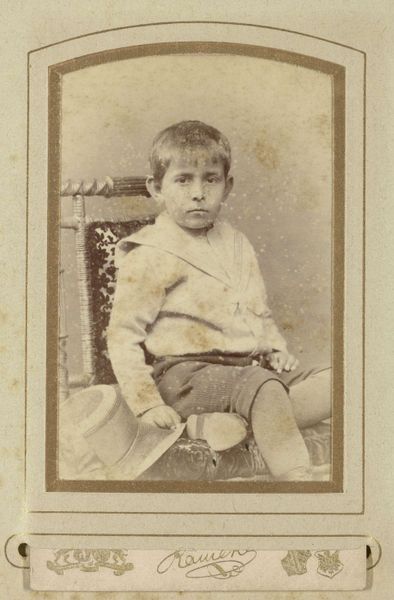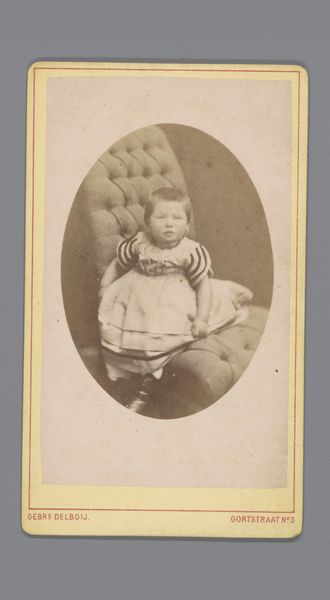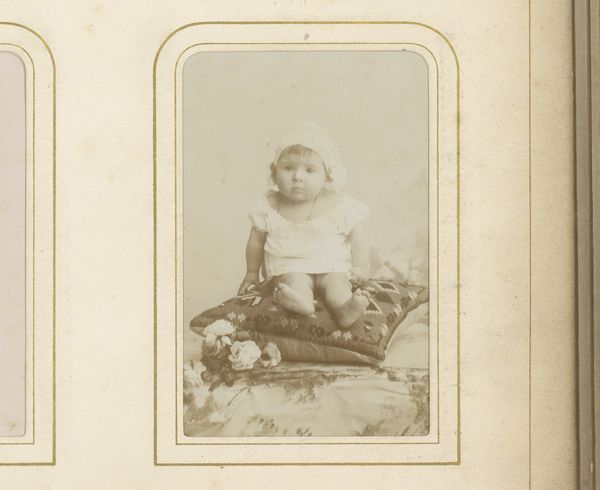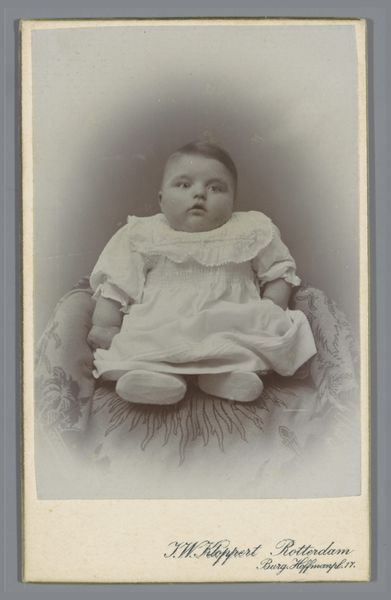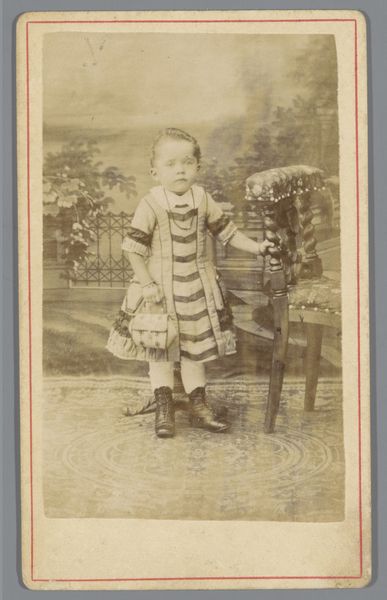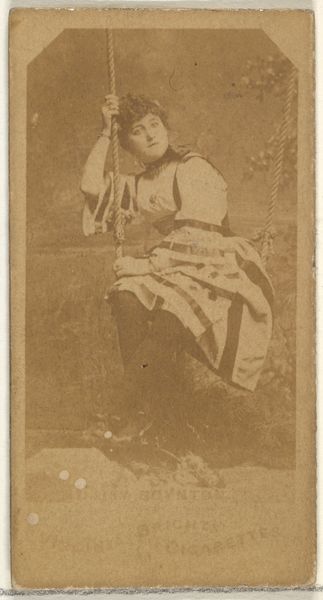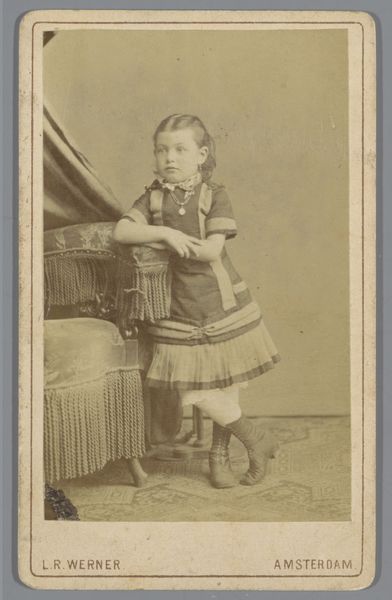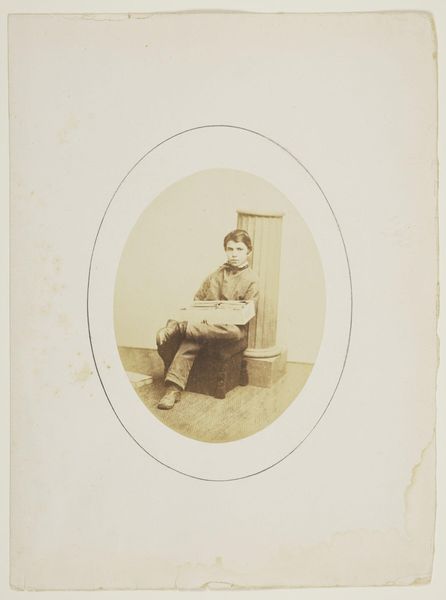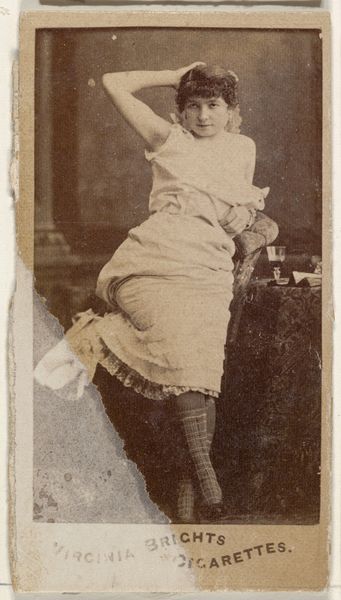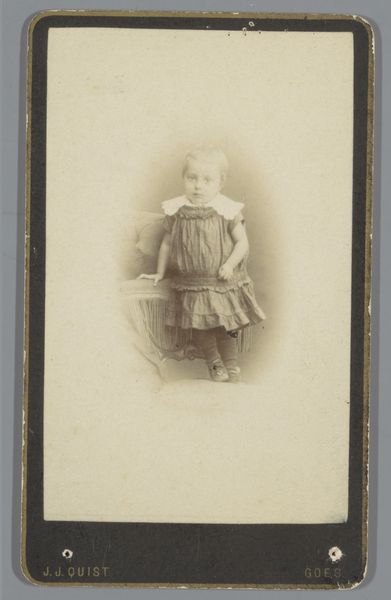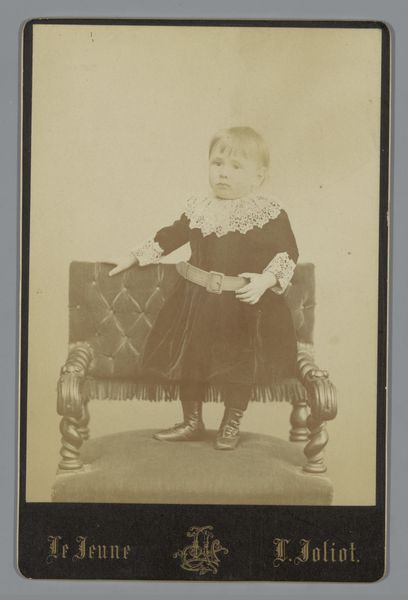
photography
#
dutch-golden-age
#
photography
#
genre-painting
#
realism
Dimensions: height 85 mm, width 51 mm
Copyright: Rijks Museum: Open Domain
Editor: So, this is "Portret van een kind in klederdracht, aangeduid als kindje Sequeira," or, "Portrait of a child in traditional costume, known as child Sequeira," taken around the 1870s, using photography. The sepia tone gives it such an antique feel. What strikes me is the child's pose – so formal yet innocent. What do you see in this piece? Curator: For me, this piece speaks volumes about the industrialization of image-making and its intersection with the traditional modes of life. It's not just a photograph; it's a material artifact reflecting broader social changes. The 'traditional costume,' the wooden shoes – these are commodities, constructed for the photographic process and perpetuating constructed values. Consider how photography democratized portraiture, making it available to a wider segment of society but also altering its very nature. Do you think the child's affect is somehow determined by the demands of posing for an increasingly available photograph? Editor: That’s a fascinating point about the commercialization of tradition! I hadn't thought about the outfit as a kind of prop. And yes, the child does seem… stiff, perhaps aware of being part of a new kind of manufacturing of memory? Curator: Exactly! We should think about who produced these photographic materials, who profited from their distribution, and what social values are inscribed within their mass-produced images. This goes beyond art and considers industrial production. Editor: This completely changes my perspective. I was focused on the aesthetic qualities, but I see now it's also about labor and consumption. Curator: Precisely. It forces us to think about how art – or, in this case, photography – functions as a commodity. Considering how an image produced in that historical context perpetuates specific ideas, we question our present ideas of authenticity. Editor: So true! Thinking about photography as part of the larger system of material culture makes it all much richer. Thank you.
Comments
No comments
Be the first to comment and join the conversation on the ultimate creative platform.
